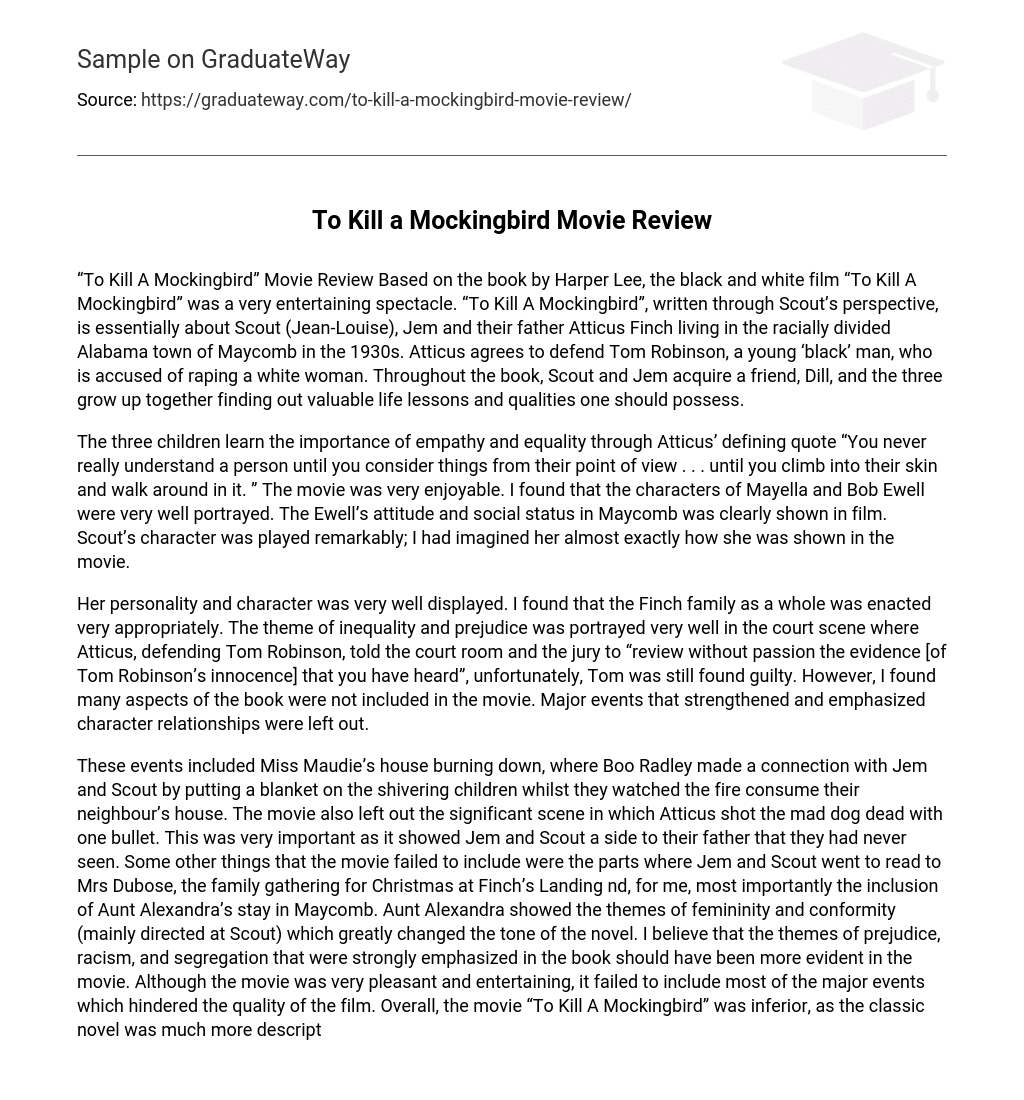“To Kill A Mockingbird” Movie Review Based on the book by Harper Lee, the black and white film “To Kill A Mockingbird” was a very entertaining spectacle. “To Kill A Mockingbird”, written through Scout’s perspective, is essentially about Scout (Jean-Louise), Jem and their father Atticus Finch living in the racially divided Alabama town of Maycomb in the 1930s. Atticus agrees to defend Tom Robinson, a young ‘black’ man, who is accused of raping a white woman. Throughout the book, Scout and Jem acquire a friend, Dill, and the three grow up together finding out valuable life lessons and qualities one should possess.
The three children learn the importance of empathy and equality through Atticus’ defining quote “You never really understand a person until you consider things from their point of view . . . until you climb into their skin and walk around in it. ” The movie was very enjoyable. I found that the characters of Mayella and Bob Ewell were very well portrayed. The Ewell’s attitude and social status in Maycomb was clearly shown in film. Scout’s character was played remarkably; I had imagined her almost exactly how she was shown in the movie.
Her personality and character was very well displayed. I found that the Finch family as a whole was enacted very appropriately. The theme of inequality and prejudice was portrayed very well in the court scene where Atticus, defending Tom Robinson, told the court room and the jury to “review without passion the evidence [of Tom Robinson’s innocence] that you have heard”, unfortunately, Tom was still found guilty. However, I found many aspects of the book were not included in the movie. Major events that strengthened and emphasized character relationships were left out.
These events included Miss Maudie’s house burning down, where Boo Radley made a connection with Jem and Scout by putting a blanket on the shivering children whilst they watched the fire consume their neighbour’s house. The movie also left out the significant scene in which Atticus shot the mad dog dead with one bullet. This was very important as it showed Jem and Scout a side to their father that they had never seen. Some other things that the movie failed to include were the parts where Jem and Scout went to read to Mrs Dubose, the family gathering for Christmas at Finch’s Landing nd, for me, most importantly the inclusion of Aunt Alexandra’s stay in Maycomb. Aunt Alexandra showed the themes of femininity and conformity (mainly directed at Scout) which greatly changed the tone of the novel. I believe that the themes of prejudice, racism, and segregation that were strongly emphasized in the book should have been more evident in the movie. Although the movie was very pleasant and entertaining, it failed to include most of the major events which hindered the quality of the film. Overall, the movie “To Kill A Mockingbird” was inferior, as the classic novel was much more descriptive than the film. By Marisa Clegg





